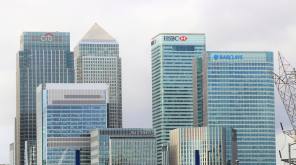

Swap rates, a leading indicator for mortgage rates, have inverted for “the first time” leading experts to anticipate “a spike in costs and rates” over the next two years.
Data provided by Knight Frank Finance to FTAdviser showed two-year swap rates climbed above both five and 10-year rates on February 3.
Since then, Coutts has repriced its two-year fixed-rate mortgages to be more expensive than its five and 10-year fixes.
While its two-year rate now sits at 2.49 per cent, its five-year rate sits at 2.39 per cent, and its 10-year rate at 2.29 per cent.
Typically, two-year fixed rates are priced lower than longer fixes, which tend to cost more because a borrower is locking in a fixed rate for longer.
The swap rate inversion, according to Knight Frank Finance, suggests there is more risk on a two-year horizon than there is on a five or 10-year one, meaning the market thinks the next two years will be very unpredictable.
"I can't recall seeing two-year fixed rate mortgages priced higher than five and 10-year products in more than 20 years in the business,” Simon Gammon, managing partner at Knight Frank Finance, said.
"Inflation is climbing rapidly and rates are going to rise as a result. Swap rates suggest that investors believe we're going to see a spike in costs and rates over the next 12 months to two years before markets start to normalise. That's likely why we're seeing this anomaly.”
Gammon said this inversion poses a tricky question for borrowers, as it will make little sense for them to buy a two-year fix unless they need to get out of it in two years.
“Most borrowers should avoid variable rates at the moment unless they may be required to repay the loan quickly,” he explained.
“As a borrower the question then is how long do you want to fox for? Are you likely to occupy the property for a short period, or might you be there long term?
“In the latter scenario, a five-year fixed loan looks attractive. A decade is a long time to commit and 10 year products often have quite onerous terms should you want to change plans, so that's something borrowers should look closely at.”
What makes the current day different from any other time in history, according to Knight Frank Finance, is that wages are out of control, interest rates are vulnerable, inflation is soaring to levels which are unique to Covid-19.
Analysis from the Bank of America Merrill Lynch has predicted Britain can look forward to a year of 7 per cent inflation, while the Bank of England has said it does not expect wages to catch up with inflation until next year.
So far, few other lenders have followed Coutt's suit. According to Moneyfacts, average two and five-year overall fixed rates across all loan-to-values for the start of this month showed average two-year fixed rates were still lower than the average five-year equivalent.
ruby.hinchliffe@ft.com



